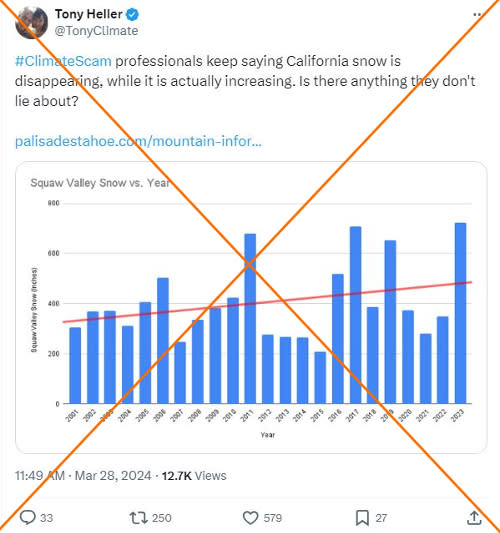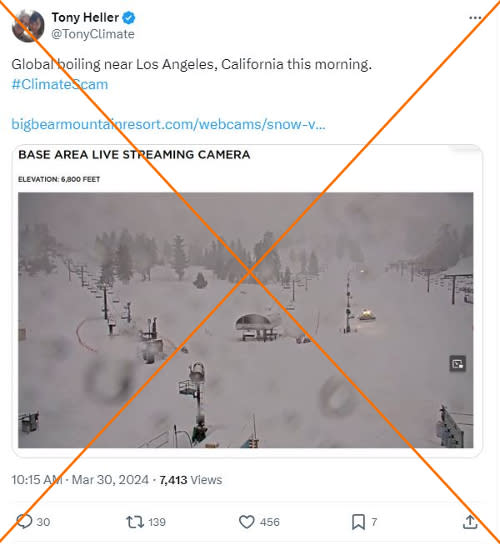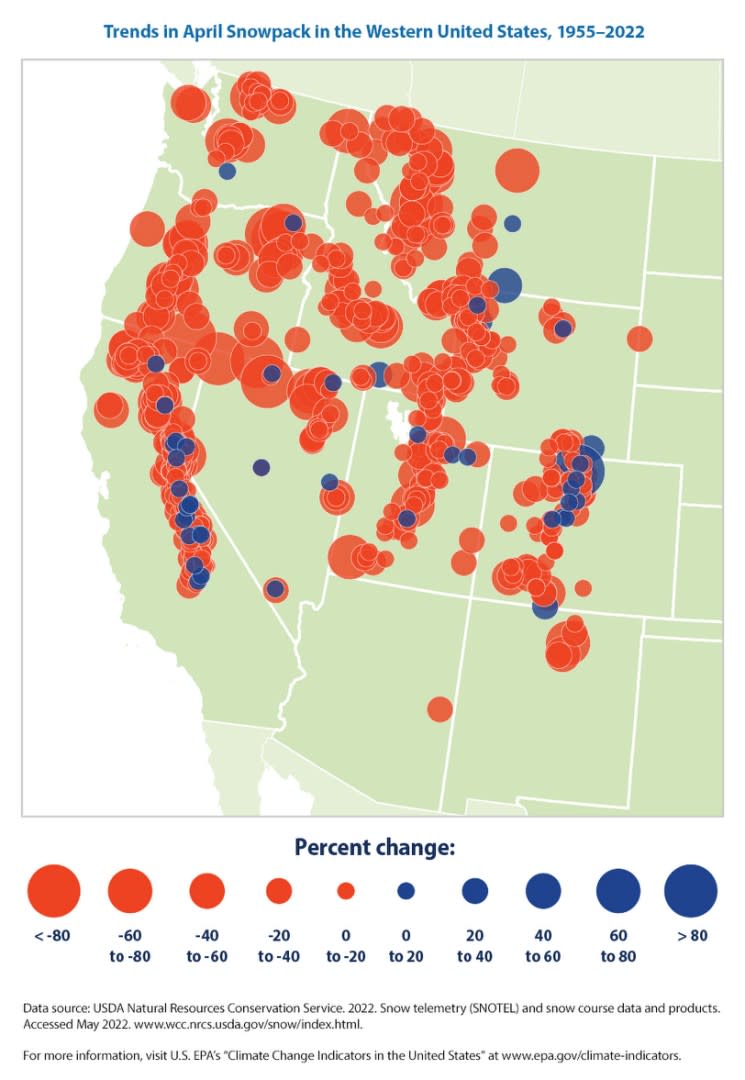Climate skeptics cherry-pick California snowfall data
Heavy snow continues to pummel California, prompting some to deny the effect of global warming on US winters by isolating local weather data. But the numbers are cherry-picked from a ski resort that experts say is not representative of the entire state, which has seen a general downward trend in snowpack over the past several decades.
"#ClimateScam professionals keep saying California snow is disappearing, while it is actually increasing. Is there anything they don't lie about," says Tony Heller in a March 28, 2024 post on X.
The post includes a graphic showing annual snowfall data for the ski resort Palisades Tahoe (archived here).
Another post from Heller (archived here), whom AFP has previously fact-checked for spreading climate change misinformation, also points to recent cold weather in the state to question the influence of global warming.


Other social media users have made similar claims.
But scientists told AFP the posts cherry-pick data to cast doubt on how climate change has affected ecosystems -- and that the patterns of one ski resort do not represent broader regional trends.
"These are classic examples of climate misinformation," said Daniel Swain, a climate scientist at the University of California-Los Angeles's Institute of the Environment and Sustainability (archived here).
Swain told AFP on April 4 that snowpack, usually measured as the amount of "water equivalent" of melted snow, has decreased across California and the western United States in recent decades, with a few outliers at weather stations with shorter records or at very high elevations.
Climate scientist Katharine Hayhoe noted that "to determine what is happening to snowpack across the western US, we have to look at all the snow monitoring stations across the region, not just one" (archived here).
Data from the US Environmental Protection Agency (EPA) show April snowpack decreased across much of the western United States between 1955 and 2022 (archived here).

"There are a few snow monitoring locations in the Sierra Nevada mountains that are showing small increases in snowpack (less than 20 percent) -- but the majority of locations are showing very large decreases," Hayhoe said April 4.
Experts said data from the Palisades Tahoe website, meanwhile, could be unreliable.
"The dataset they're referencing isn't being collected by reputable scientific organizations, so there's no way to verify their methodology and ensure continuity of record," said Andrew Schwartz, lead scientist and manager for the Central Sierra Snow Laboratory at the University of California-Berkeley (archived here), on April 5.
Annual variability
Part of the reason why some California weather stations have recorded abnormal snowpack levels has to do with the state's weather patterns.
John Abatzoglou, associate professor of climate variability at the University of California-Merced (archived here), told AFP on April 4 the state has "incredibly variable year-to-year precipitation, with most of the precipitation falling from November to March (coincidentally when snowpack develops)."
Felicia Marcus, a visiting fellow at Stanford University's Water in the West Program (archived here), agreed, saying California "did have an unusually big record snowfall in much of the Sierras last year and this year is somewhat above average."
However, she noted April 4 that "under climate change we're seeing a redistribution of precipitation rather than uniform declines." Multiple studies have found such trends (archived here and here).
Global warming will decrease snowpack, according to scientific consensus, with the potential for varying local and regional trends as human-induced climate change results in "multiple, and sometimes counteracting, influences" (archived here).
Using data from the California Office of Environmental Health Hazard Assessment (archived here), Abatzoglou calculated a roughly 28 percent overall reduction in statewide snowpack between 1950 and 2022.
He added that "no credible scientist would only analyze 23 years of data," as the social media posts do, "because the noise of weather is so great."
AFP has debunked other claims about climate change.

